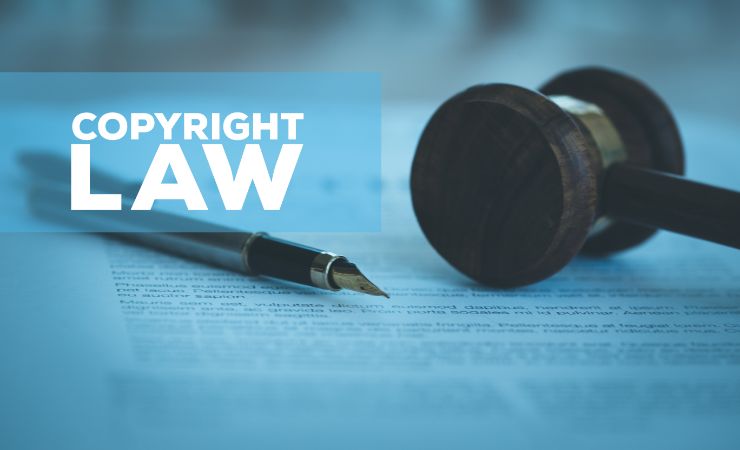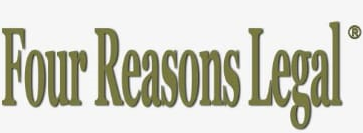What Can You Not Copyright in Colorado?

When it comes to your intellectual property, you want to be certain that the audience you are targeting can easily find your information and see the link between you and your work. Federal regulations governing copyright are implemented uniformly in all licensing and branding activities conducted throughout the nation. Understanding the ins and outs of the copyrighting process may seem challenging, but it is essential for anyone looking to seek a copyright certification.
What Is a Copyright?
Original works of authorship are protected by copyright, a type of intellectual property, as soon as the author fixes the work into a tangible form of expression. All of these and more are considered works in the context of copyright law:
- Pictures
- Paintings
- Graphics
- Movies
- Poems
- Sound recordings
- Musical compositions
- Computer programs
- Novels
- Blog posts
- Architectural works
- Plays
For example, if you write a book based on your ideas and with your own hands and then choose to publish that book, you can apply to have it copyrighted.
Through the concept of property rights, the copyright’s main goal is to encourage and compensate writers for producing new works and making those works accessible to the public for enjoyment. By giving creators certain exclusive rights that enable them to safeguard their creative works from theft, they benefit from financial rewards. The public also benefits by experiencing creative works that might not otherwise be produced or distributed.
What Information Can and Cannot Be Copyrighted?
Three components—fixation, originality, and expression—must all be present for something to be protected by copyright. Fixation is the requirement that a creative idea be in a permanent state, such as being recorded for visual media, on tape for auditory media, or written down for literature and stories. The phrasing of these standards helps support the notion that while an idea cannot be protected by copyright, its expression, as a tangible form of that belief, may. In essence, a movie can be protected by copyrights, but the concept underlying the film is not. Lastly, the work must be sufficiently original to qualify for copyright.
Works and Ideas That Can Be Copyrighted
- Written works
- Pieces of music
- Dramatic performances
- Works in choreography and pantomime
- Works in sculpture, graphics, and painting
- Movies and other forms of audiovisual art
- Recordings of sound
- Structural works like architecture
These are all original ideas that, by bringing them into a tangible form, can be honored for their originality and distributed as original works of art.
Works and Ideas That Cannot Be Copyrighted
- Information that is widely accepted
- Ingredient lists found in formulas and recipes
- A concept for a story, book, or film
- Names of companies, groups, or organizations
- Names of domains
- A person’s alias, such as a pen name or stage name
- Slogans, mottos, and catchphrases
- Laws, including judicial rulings, legislation, regulations, and case law
Because of how prolific these subjects tend to be, as well as how frequently they are used in different kinds of media, applying copyright to any of these concepts would deter anyone seeking to invent or create new works.
How to Tell If Something Can Be Copyrighted
The information that can and cannot be copyrighted holds to the three ideas of fixation, originality, and expression. For example, one of the items that cannot be copyrighted is the concept behind a story, book, or film, but the produced piece of literature or final movie itself can be created due to its expression of that idea. This distinction allows for certain themes, like fantasy or science fiction, to be reused in different stories and pieces of media without allowing direct remakes or copies to take away from that original work of art. The difference between these concepts may seem minor, but when looking to copyright your original ideas, knowing how to do so and what you must do before getting a copyright is crucial for protecting your work.
FAQs
Q: What Is Not Eligible for Copyright?
A: Unless your idea is expressed, original, and in a tangible form, it cannot be granted the protection of copyright. For example, if you have an idea for a video game planned out in your head, but never begin developing, designing, or fleshing out that idea into a real work of art, you cannot copyright that idea. Once the final product is created, that will receive the copyright due to its tangibility and inherent link to you.
Q: What Is the Difference Between a Copyright and a Trademark?
A: In general, trademarks protect business names, taglines, and logos, while copyrights safeguard original, creative work. Copyrights generally safeguard the rights of persons who create literary, dramatic, musical, artistic, and other specialized intellectual works (like software code). Trademarks protect the use of a company’s name, product names, brand identification (such as logos), and catchphrases.
Q: What Does a Copyright Attorney Do?
A: A copyright attorney, often known as an intellectual property lawyer, can either help clients copyright their works or assist them in dealing with third parties that violate their copyrighted works. The work of lawyers in the first task is quite simple. They may guide you during the copyright process, assist you in drafting your application, and file the necessary documents.
Q: What Type of Attorney Specializes in Copyrights?
A: Intellectual property lawyers help clients with:
- Patents
- Copyright
- Trademark law
- Trade secret projects
- Licensing
- Franchising
- Distribution
They can also create agreements for licenses, royalties, technology transfers, and similar things. An IP attorney may be retained to represent clients before administrative bodies like the US Patent and Trademark Office, as well as in federal and state courts.
Seeking Help With Your Copyright Application
It is essential to speak with a copyright attorney who can guide you through the procedure if you are thinking about applying for a copyright. The attorneys at Four Reasons Legal can assist you with any copyright-related matter, including registering your work or engaging in legal action for infringement. Please do not hesitate to contact us if you have any concerns about the copyright act, the advantages of copyright registration, or infringement.




